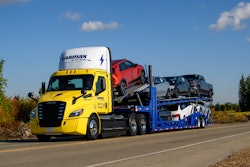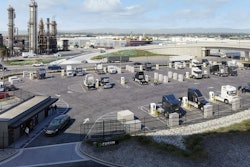Nuclear power. That term has had a roller coaster ride since it came into vogue in the 1940s. It promised near endless energy in the early 1950s for everything from cooking to going to the stars. It also introduced us to the wonderful world of MAD — mutually assured destruction — as the U.S. and former U.S.S.R. struggled with growing weapon’s caches capable of annihilating the world several times over.
Surviving the Cuban Missile Crisis and atmospheric testing of weapons, the nuclear industry kept making progress through safe, clean, commercial power plants. That industry really took off, until the reality that nothing is risk-free loomed with the accidents at Chernobyl and Three Mile Island. The perennial pursuit of long-term storage of nuclear waste has been almost as interesting and endless as the TV soap opera Days of Our Lives.
I grew up in Oregon, once a strong advocate of nuclear power with its Trojan Nuclear Power Plant on the Columbia River and its iconic hyperboloid cooling tower. In time, Oregon soured on nuclear power, perhaps accelerated by the near miss of the Mt. St. Helens volcanic eruption. New nuclear power projects in the U.S. began to take much longer to reach fruition, a combination of greater scrutiny, evolving requirements, and competition from cheaper, faster energy solutions like natural gas.
As little as 10 years ago, if you’d asked me, I would have told you that nuclear power was on the path to being sunsetted as a commercial technology, used only in niche areas like submarines and aircraft carriers.
Then along comes commercially viable electric vehicles. Along comes better realization that fossil fuel emissions are contributing to global warming. Nuclear advocates realized their opportunity to rebrand the industry as a green, safe, zero-emission source for electricity. They saw an opportunity to partner with cost-effective industrial-scale solar and wind power to become the stabilizing third leg of the responsible power generation stool.
But something else was needed to get the nuclear Phoenix to rise from its ashes, especially after the challenges faced at Fukushima. The brand image needed to change from big and dangerous to small and safe. Make nuclear power an inconsequential thought. Along comes the nom du plume Small Modular Reactor, or SMR.
It’s a tremendous story of recovery for an industry that was seemingly becoming the equivalent of a western ghost town. Vast amounts of government and private money have returned to the commercial nuclear power industry. It’s suddenly okay to talk about it again in a positive vein without instantly evoking a negative response out of the audience. It even has such forward-thinking supporters as Microsoft founder Bill Gates.
I’ve dipped my toes into the support of nuclear power. I very briefly mentioned nuclear power (grouped along with green alternatives like solar, wind, geothermal and hydro) in the 2018 NACFE Guidance Report, Electric Trucks – Where They Make Sense.
I did a much deeper dive in 2020 with NACFE’s Guidance Report on Making Sense of Heavy-Duty Hydrogen Fuel Cell Tractors with a whole section titled Nuclear Energy for Hydrogen.
I got some pushback from an environmental advocate who I asked to review a draft of that report. He questioned why I was even talking about nuclear. There is a maxim in politics that you never mention your competitor.
I explained that electrifying transportation, industry, and homes to convert North America from fossil fuels means that we need more than three times more energy generation capacity — perhaps much more — than we currently have. A fundamental tenet at NACFE is to be unbiased. I believed nuclear had to be included because making and distributing hydrogen requires significant electricity.
Alternatives like geothermal and hydropower have pretty limited future potential growth. Solar and wind are growing significantly, but even optimistic projections are that they cannot quickly offer 24/7/365 generation capacity to support trebling of power demand. Fusion is still a promising blue-sky science project, not yet mature enough to bet the farm on.
What is left?
I conclude, as have others, that nuclear power needs to be part of the future. This has led to some interesting challenges for environmentalists that have long argued against nuclear power. In the most urgent fight against fossil fuels, they are grudgingly beginning to realize some compromise is needed and that nuclear power may be a necessity for a better world.
It is encouraging that physics and science are trumping emotion — a realization that the perfect solutions rarely exist, and the real world requires that tradeoffs be made. A realization that fact-based decision making is required on energy sourcing.
Neighbors used to donate old magazines to me as a kid. I grew up reading endless articles in magazines like Popular Science, Popular Mechanics, and Aviation Week & Space Technology, highlighting great new nuclear-powered ships, submarines, planes, trains and even cars. Some of them were actually built.
As interesting as these concepts are from an engineering perspective, they often share a fairly common theme that ultimately an electric motor is moving these vehicles.
If the future is indeed electric, that electricity has to start somewhere. That somewhere will be a partnership of a range of generation systems that will include geothermal, hydro, wave, wind, solar and nuclear. The endless challenges with nuclear waste will need to have engineered solutions, but is that an any less feasible challenge than making carbon capture viable for continued use of fossil fuels, making green hydrogen cheaply, or putting wind and solar all-over North America?
Trebling power demand in North America will require a team of solutions. There are no silver bullets. What is best in one region may not be in another. And efficiency improvement will also need to be a part of that solution set.
What is going to power your trucks in the future? What is going to power the factories making those trucks? Whatever the sources, we’ll need to generate a lot more electricity and find ways to adequately and reliable distribute it.











